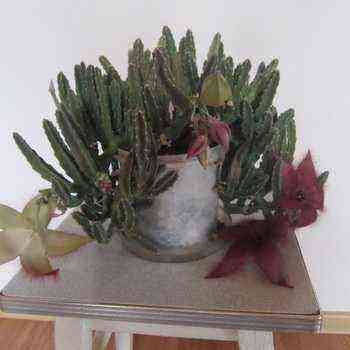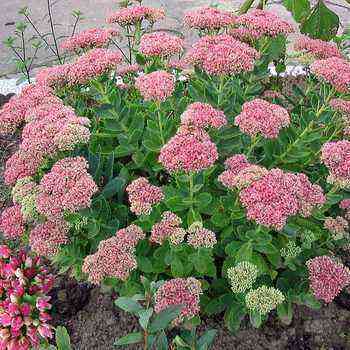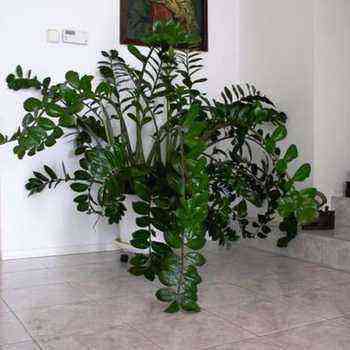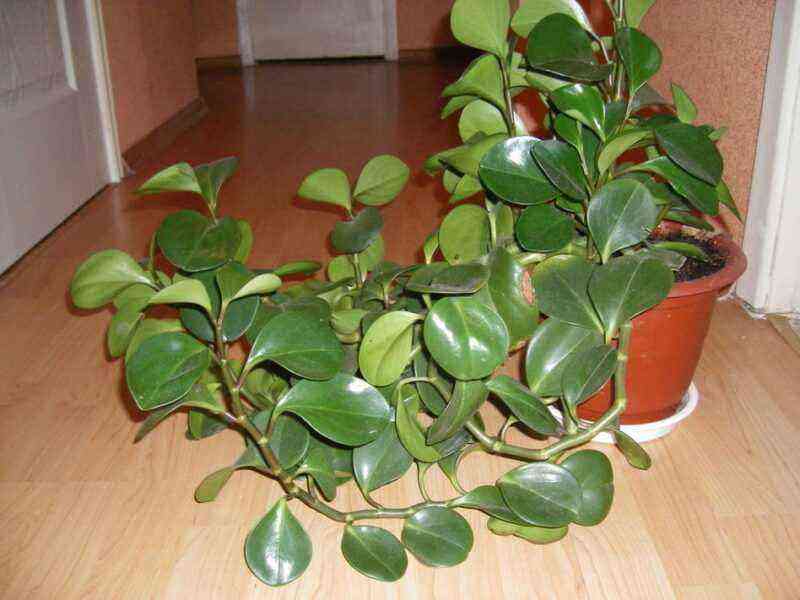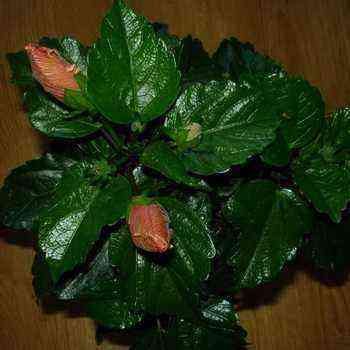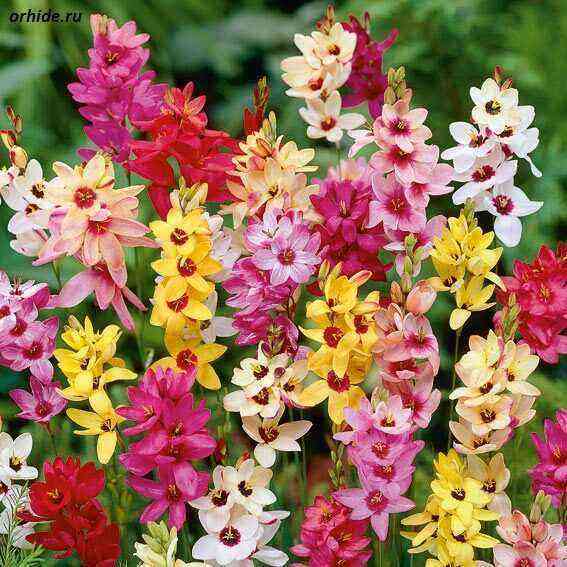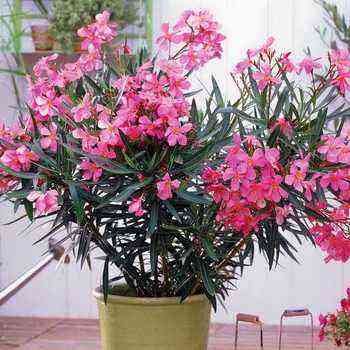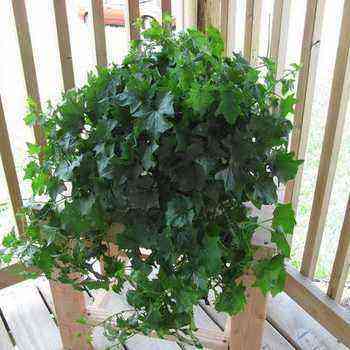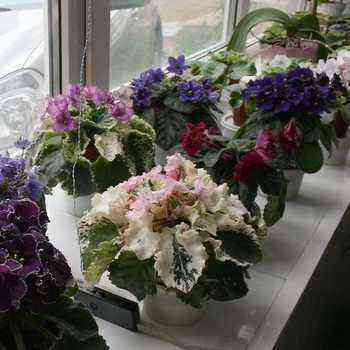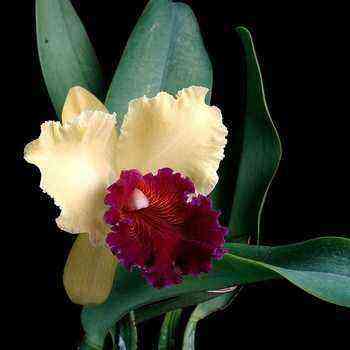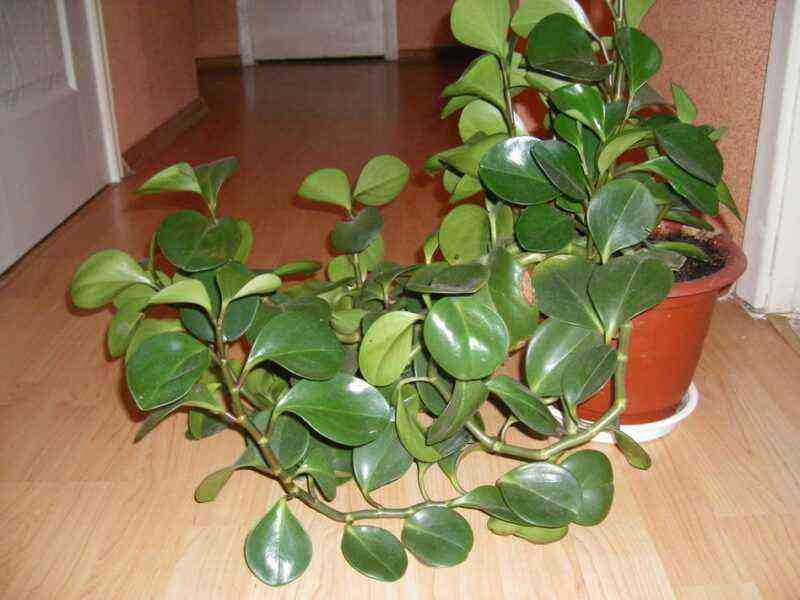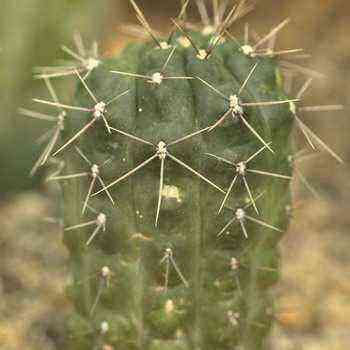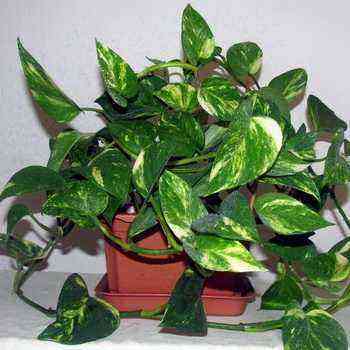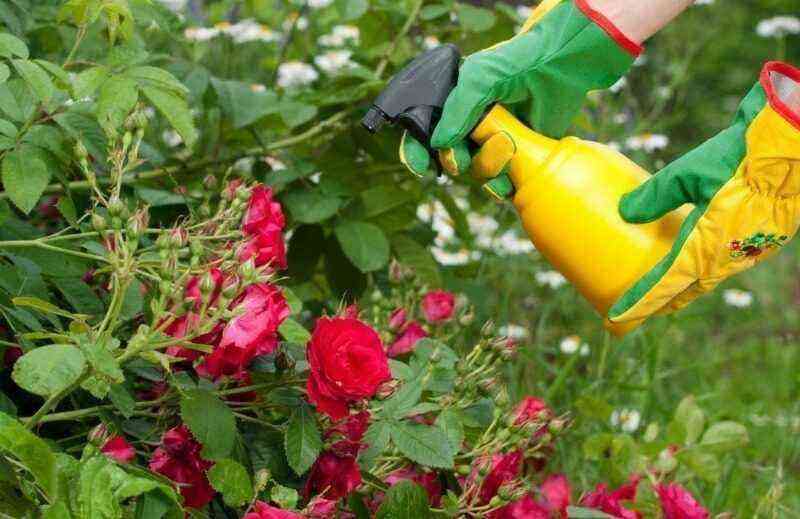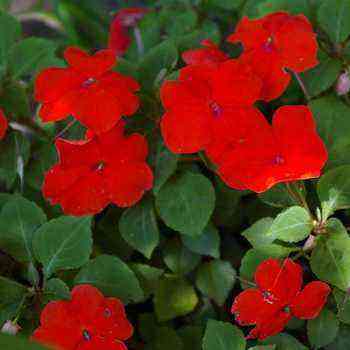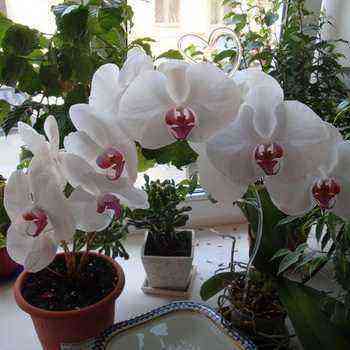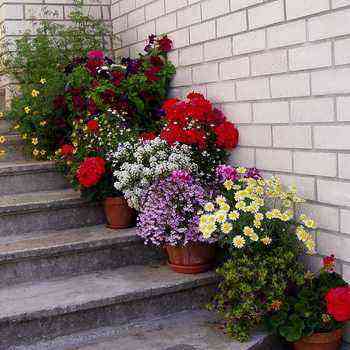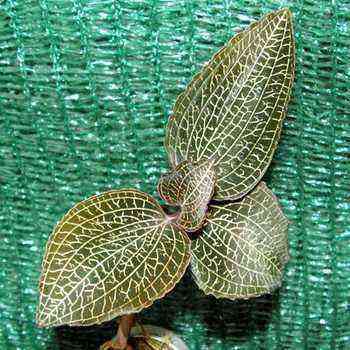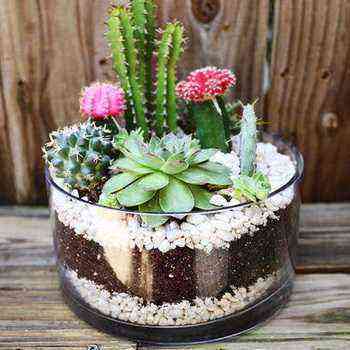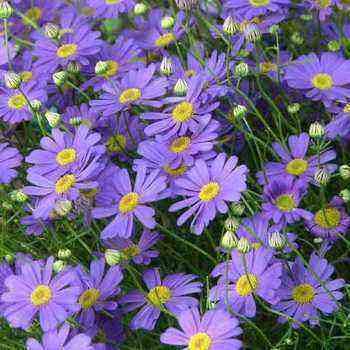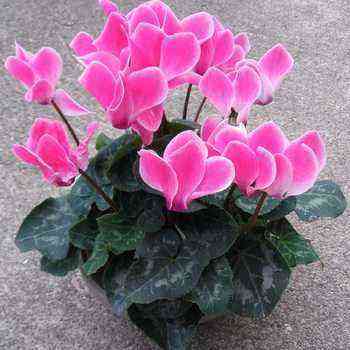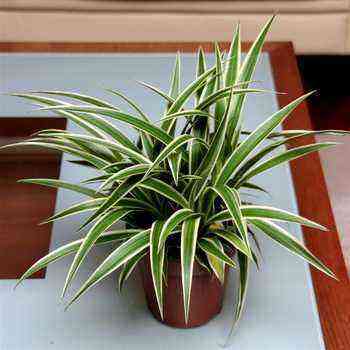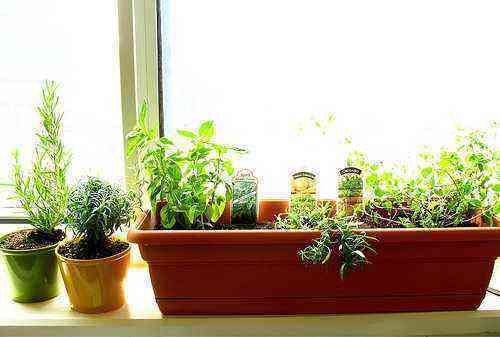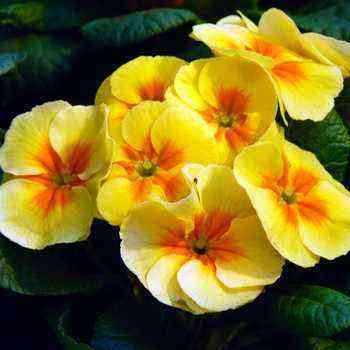 Homeland – tropical regions of Asia. Ardisia flower is an evergreen houseplant with beautiful flowers and unusual fruits. Leaves are leathery, green, oval, serrated. The flowers are numerous, usually creamy, small. The fruit is a pea-sized coral-red berry that can remain on the plant for several months. The decorative qualities of a tropical plant are preserved almost all year round. Ardisia blooms and bears fruit almost constantly. Indoor plant ardisia during flowering in the photo below:
Homeland – tropical regions of Asia. Ardisia flower is an evergreen houseplant with beautiful flowers and unusual fruits. Leaves are leathery, green, oval, serrated. The flowers are numerous, usually creamy, small. The fruit is a pea-sized coral-red berry that can remain on the plant for several months. The decorative qualities of a tropical plant are preserved almost all year round. Ardisia blooms and bears fruit almost constantly. Indoor plant ardisia during flowering in the photo below:
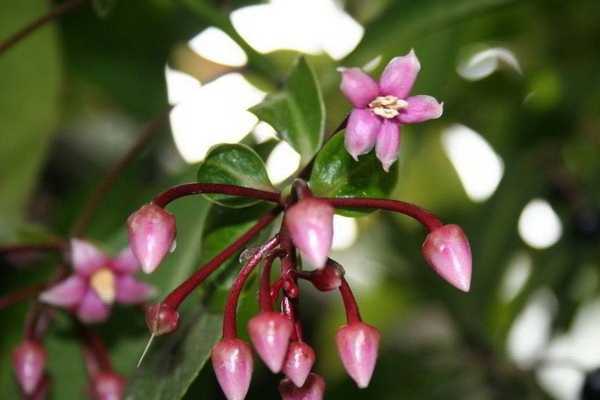
Ardisia crenate (krenata) and other plant species
The ardisia plant is represented by more than 800 species, with a description of some of them you can find on this page. Among them there are specimens of different heights, flower shapes and fruit colors. The most common are the following types:
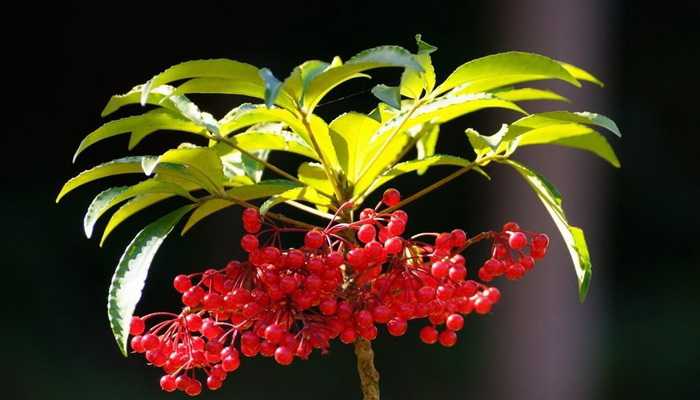
Ardisia crenate (Ardizia crenata). A very beautiful houseplant that has the shape of a bush.
At home, this representative of the tropical plant Ardizia grows up to 2 m in height. Ardisia krenata blooms in white or pink. The fruits ripen for a whole year until the next harvest.
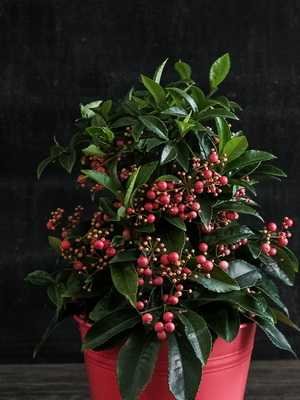
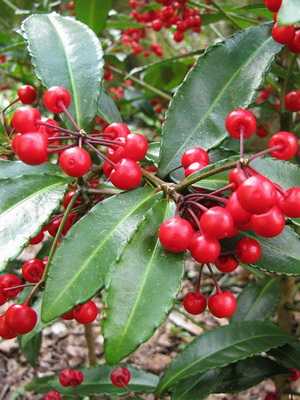
Berries of ardisia crenate are bright coral in color. The leaves of the variety are glossy, wavy at the edges.
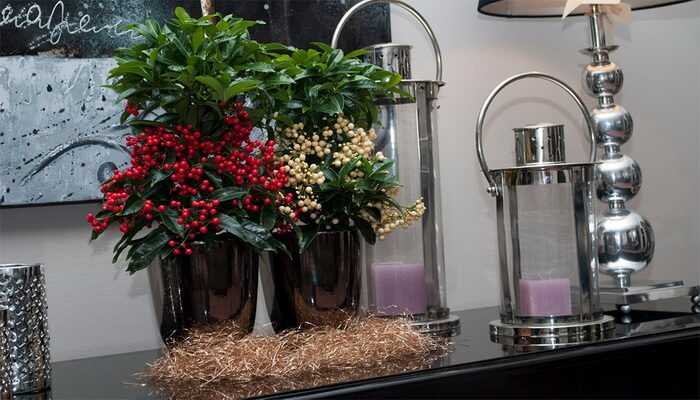
Ardisia curly. This variety is rarely grown at home. Plant height – from 50 to 80 cm.
Emerald leaf plates with a rough surface are distinguished by an elongated and elongated shape with a pointed tip. The variety blooms at the beginning of summer, the flowers look like white or milky stars. Fruiting Ardisia curly with bright scarlet berries.
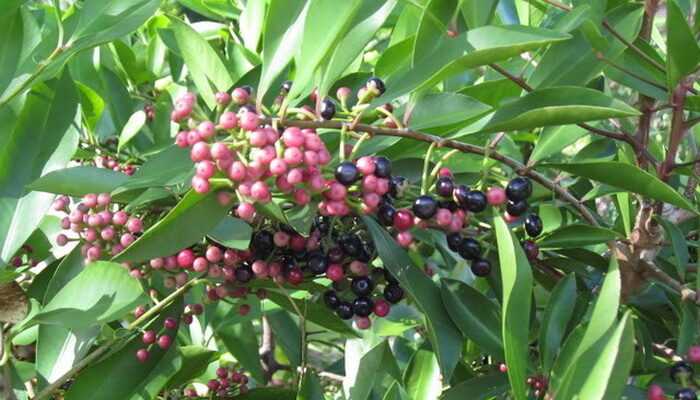
Ardisia is low. The variety has a shrub shape, slightly below curly ardisia.
The sizes of the leaf plates are different – from 5 to 15 cm, saturated malachite color with a wavy edge. Inflorescences have the shape of a panicle, consist of small flowers in the form of pale pink stars.
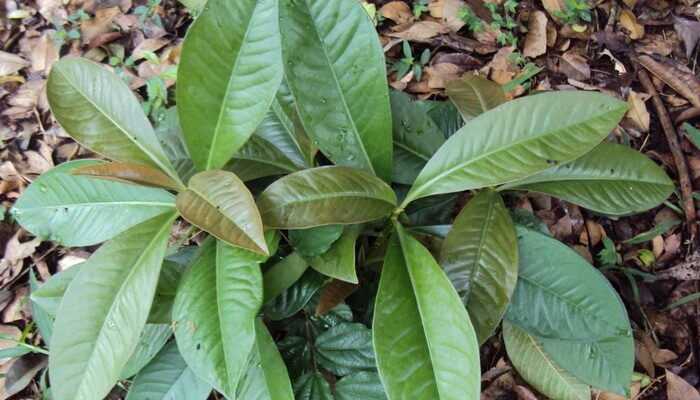
Ardisia solanacea. This variety is distinguished by stems and leaves with a red tint. It blooms in light lilac or pink shades. Fruits are red, in the process of ripening they become darker with a glossy surface.
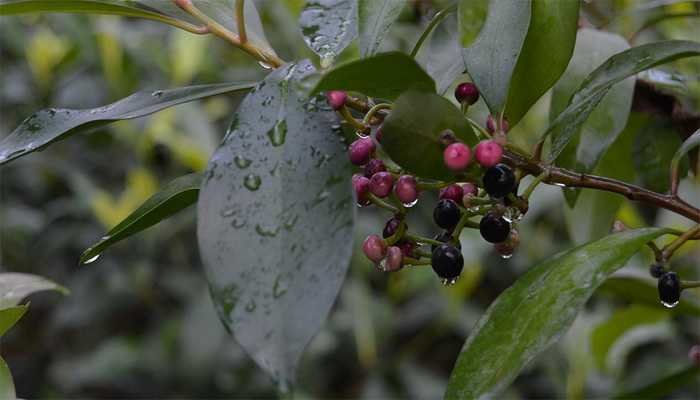
Ardisia Walicha. This is perhaps the rarest variety that is practically not grown indoors in our latitudes.
The specimens are large, the leaves grow up to 20 cm in length and 6 to 8 cm in width. They are distinguished by an oval shape with rounded edges. The flowers are red in color with a pronounced purple tint. Fruits with berries of dark flowers.
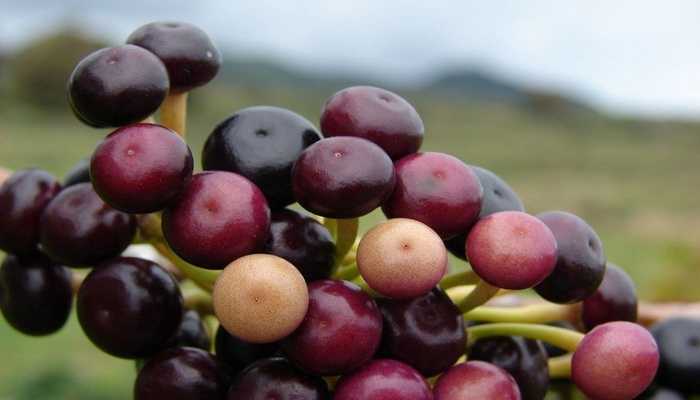
Ardiziya Malouyan. A low-growing variety with large leaves – up to 25 cm in length. The leaf plates are whitish at the edges along the entire perimeter. Below the leaves are reddish-green.
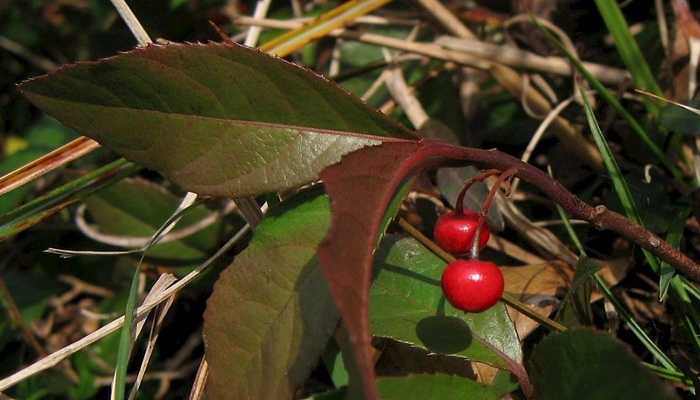
Ardisia Japanese. The variety looks like a low-growing shrub, no more than 40 cm high.
The leaves are ovoid, about 5 cm long and up to 4 cm wide, dark green in color, pointed at the edges. The flower color has two options – white and pale pink. The berries are dark red; as they ripen, the color becomes darker and more saturated.
All these varieties of the tropical Ardisia flower are shown above in the photo.
Growing white and other ardisia
The plant is photophilous, but needs protection from direct sunlight. A moderate air temperature is required, in the summer about 22 degrees, and during the ripening period of the fruits – in the range of 15-17 ° C. When caring for ardisia at home in the summer, leaves and stems should be regularly sprayed and constantly maintain high humidity – at least 60%. Spraying is stopped during the flowering period, otherwise, with this procedure, the formation of berries will not occur. When the fruits have already appeared, it is important to resume spraying so that the berries do not shrivel.
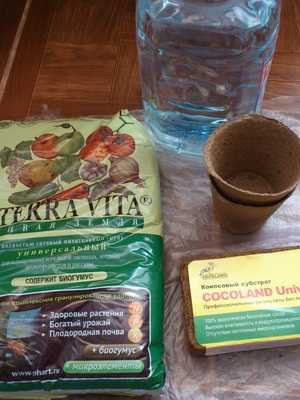
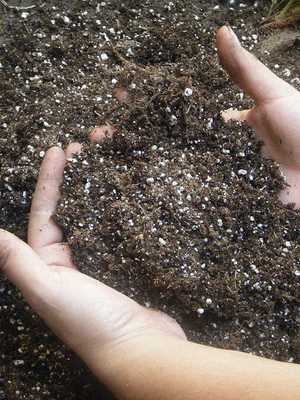
The substrate should be neutral and light. A soil mixture of sod and leafy soil, humus, sand (2: 1: 1: 1) with the addition of bone meal (12-15 g per 1 kg of substrate) and wood ash (20-25 g) is suitable.
Caring for an ardisia plant consists of moderate watering, however, the earthen ball should always be moist. In the summer season, watering should be plentiful, with the arrival of winter it is reduced.
During the period of active growth, it should be fed with flower fertilizer 2 times a month, from spring to autumn. Mineral fertilizers are used for feeding. As soon as ardisia enters the resting stage, feeding should be stopped.
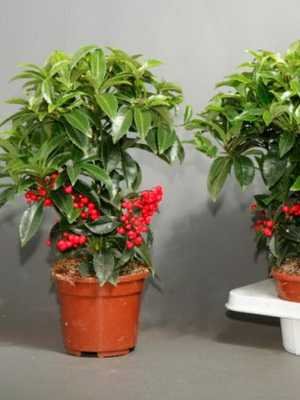
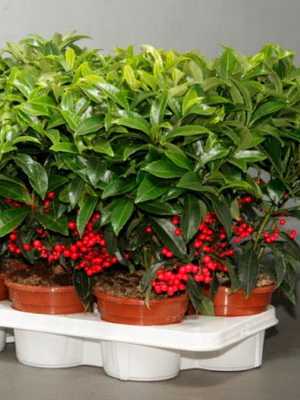
The plant does not respond well when disturbed. Given this feature, it is necessary to transplant ardisia only in cases where the roots completely fill the pot. However, young plants need to be replanted annually every spring until they are 5 years old. Ardisia is a slow growing flower and will grow even more slowly with frequent transplants. An important condition for transplanting this tropical flower is the use of a drainage layer – about 2 cm. The pot for planting should not be too large, medium-sized containers are suitable. Ardisia transplant during home care in the photo below:
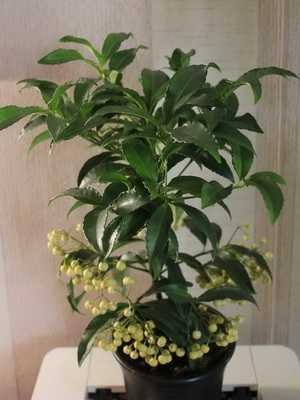

Under conditions of correct cultivation, ardisia blooms almost all year round. The key to good and regular flowering is to maintain the optimal air temperature during the winter. Ardisia blooms in white, pink, cream, pale lilac color.
During the flowering period, the air temperature should not be allowed to drop below +10 degrees. At this temperature, the flowers fall off, and the fruits can no longer form. The optimum temperature for berry formation is 12-15 ° C.
By pruning, tropical plants can be made to look more attractive. To form a beautiful crown, the top must be cut and pinched. Such care for ardisia is presented in the photo below:

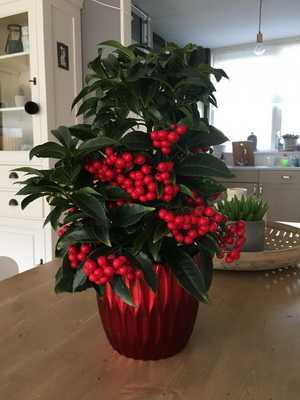
As a result of pinching, the division of shoots is stimulated, the plant becomes more lush and rounded. Pruning is carried out in early spring.
Reproduction of ardisia at home by seeds and cuttings
At home, ardisia reproduces in two ways:
To grow room ardisia from seeds at home in January, you should pick the largest fruits about 1 cm in diameter. A bone is removed from the fruit and planted in a well-moistened substrate, deepening by about 1 cm. From above, the soil in which the bone is located is covered with glass or film to create a greenhouse effect. Seed pots must be kept in a room with an air temperature of at least 20 degrees, regularly moistening and ventilating the substrate.
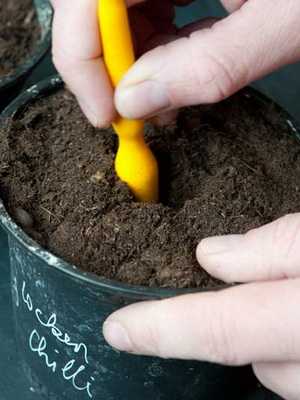
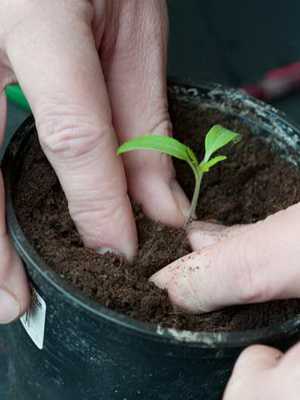
As soon as 1-2 leaves appear on the seedlings, they are dived into separate pots. With proper care, it takes only 2-3 years for the seed-derived plants to resemble adult Ardisia. They will begin to bloom and bear fruit.


When propagating ardisia by grafting, often even experienced florists have difficulties associated with their problematic and long-term rooting. In this method of propagation, the tips of the shoots are used, which are rooted in a well-moistened substrate. You can put the cuttings in a container of water and wait for them to take root, and then transplant them into the ground.
Problems when growing ardisia
Novice flower growers may face some problems when growing an indoor Ardisia flower. Descriptions, causes and solutions to common problems are presented in the table below:
Problem | Causes | Methods of solution |
Faded leaves | Sunburn. When exposed to direct sunlight, dry brown spots form on the leaves | Move the pot with the plant to a slightly shaded place, excluding the sun’s rays |
Yellow leaves | Dry air, lack of food and lighting | Moisten the soil, increase the frequency of watering, ensure regular spraying, choose a place with good lighting |
Brown leaves | Brown spots on the leaves are formed when the irrigation regime is violated – too abundant or, conversely, dry soil, the occurrence of drafts | Adhere to the correct watering regime, prevent drafts in the apartment |
Pale leaves with a bright mesh | Blanching of leaves occurs with the development of chlorosis | Provide the plant with fertilizers containing iron |
Soft leaves with curled edges | Low air temperature | In the spring-summer period, the temperature should not drop + 20 ° С, in winter – not lower than + 12 ° С |
When proper care for ardisia is not provided, parasites appear on the plant – mealybugs, spider mites, scale insects and aphids. Insecticides are used to treat the plant. They treat the surfaces of stems and leaves after removing the pests with a cotton pad dipped in water or soapy water.
